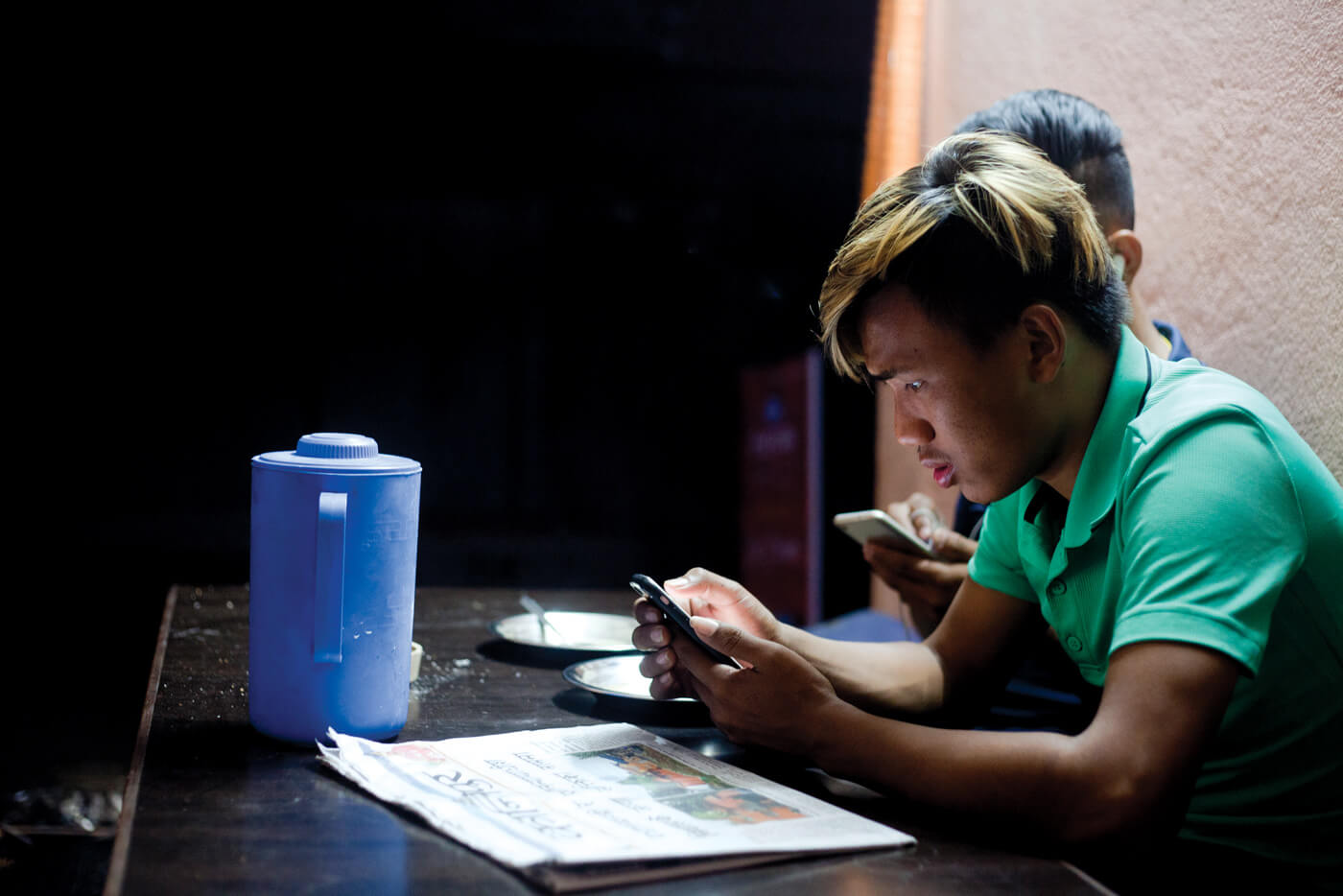Nepal is becoming a nation of net addicts

A couple in Kathmandu, tired of their daughter playing with her mobile all the time, cut off the home internet and hid her phone. The 23-year-old got severe withdrawal symptoms, became agitated, was weeping and yelling, and even slashed her wrist. Her parents had to take her to a psychologist.
A woman in Baneswor disabled the home wifi because her 17-year-old son was always on his mobile. The teen then started going to his aunt’s home just to use the net. He told his psychiatrist: “If I don’t have my phones, I get anxious. I don’t even want to eat or talk.”
Read also
Facebook nation, Madhu Acharya
New news, Editorial
A father was concerned that his daughter studying the A-levels appeared lethargic every day, and wondered if she was on drugs. He peeked into her room one night and found her watching pornography on her phone.
Psychologist Ganga Pathak who treated all three patients, says Internet addiction has become an epidemic in Nepal in the last five years. A psychological counselor for over 20 years, she says this phenomenon is similar to drug addiction or alcoholism.
Read also:
Nepalis are drifting to digital media, Madhu Acharya and Bhumiraj Chapagain
Instead of linking people, she believes that as elsewhere in the world the Internet is making Nepali users lonelier, unhappy, insensitive and unproductive.
A 12-year boy in Dhumbarahi had pasted a notice on his door forbidding anyone from entering because he was on his mobile all the time. When his parents tried to get him to talk to people, he would cry. They took him to Pathak, who diagnosed digital addiction.
Children’s minds and bodies grow rapidly before the age of five, so they should be kept away from mobile phones. However, since most parents are busy, they prefer to distract their children with gadgets, which is the beginning of children’s addiction, says Pathak.
Sabrina Thapa, who teaches at a school in Balaju, says her students are mostly up all night playing games on their mobiles, so they are drowsy in class. A study of 136 students three years ago by the Manmohan Memorial Institute of Health Sciences showed that 92.8% were affected by digital addiction or Gaming Disorder. In 2018, WHO listed Gaming Disorder among international diseases. Facebook, YouTube, Instagram and more recently TikTok are the most popular sites.
Read also:
Addicted to joystick, Suprasanna Aryal
While last year’s Sharecast survey showed that 86% of youth aged 16-24 used Facebook regularly, the proportion has grown to over 90% this year.
Digital addiction among the youth seems to be a result not of the need to communicate through the Net, but of habit formation. Tirsana Sharma, 18, of Kalanki says: “I alone use almost a dozen communication apps like Facebook, Messenger, Instagram, Snapchat, Twitter, Tiktok, Viber and WhatsApp. If I do not use them all, I might miss what my friends are up to.”
Socioloigist Janak Rai believes digital addiction is changing the communication culture and socialisation within Nepali socitety. “Due to digital addiction, the new generation is becoming self-centered. We cannot stop the use of these technologies, but it is time we began a public debate on how and for how long we should be using them every day.”
Digital addiction also leads to insomnia, which invites further health problems like migraines, anxiety, and depression. According to Sirjana Adhikari, eye specialist at Tilganga hospital, constant exposure to the blue light from smartphones and laptops directly affects the eyes, and leads to problems like itchiness, dry eyes, headache and blurred vision. Constant bending to use the devices leads to chronic neck ache called ‘text syndrome’ or ‘text neck’.
Digital addiction also makes users more aggressive, and the Police believe that it is contributing to crime. SP Narendra Upreti of the Crime Investigation Division says: “There is a trend of shooting pornographic videos, exchanging them, blackmailing people and attempts at character assassination. Up to 90% of the digital crimes that we investigate are related to sex.”




